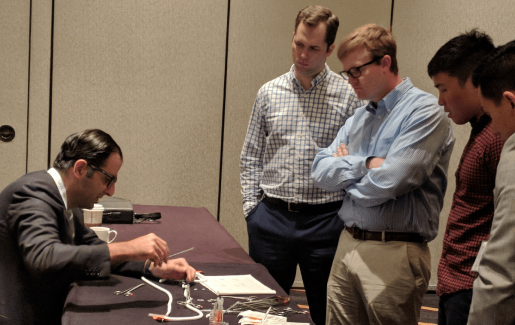Deep Vein Thrombosis: Understanding the risks, causes and treatments

Deep Vein Thrombosis (DVT) is a serious condition that affects millions of people each year. It is a type of blood clot that forms deep within the veins of the legs, thighs and pelvis. If left untreated, DVT can lead to life-threatening complications such as pulmonary embolism.
What is DVT?
DVT is a blood clot that forms in a vein deep within the body. It typically occurs in the legs, but it can also occur in other areas of the body. DVT can happen to anyone, but it is most common in people over 60 years old. It can also occur in younger people who have certain medical conditions or lifestyle factors that increase their risk.
How does DVT happen?

DVT occurs when blood clumps together and forms a solid mass within a vein.
“There are several factors that can contribute to the formation of blood clots,” says Dr. Ramyar Gilani, associate professor of surgery in the Division of Vascular Surgery and Endovascular Therapy. “These can include injury to a vein, surgery, prolonged immobility (such as during long plane rides or bed rest), certain medications and some medical conditions that increase the risk of blood clots.”
Who is at risk for DVT?
Certain factors can increase the risk of developing DVT. These include:
- Age over 60
- Prolonged immobility
- Surgery or trauma to the lower limbs
- Obesity
- Smoking
- Cancer or chemotherapy
- Hormone therapy or birth control pills
- Pregnancy or recent childbirth
- Inherited blood clotting disorders
Does DVT need treatment?
Yes, DVT requires prompt medical treatment to prevent complications.
“If left untreated, a blood clot can break loose and travel through the bloodstream to the lungs, causing a potentially life-threatening condition called pulmonary embolism,” Dr. Gilani says.
What are the treatments for DVT?
Treatment for DVT typically involves medication and lifestyle changes. The primary goal of treatment is to prevent the clot from getting larger and to prevent new clots from forming. Medications used to treat DVT include anticoagulants, which thin the blood and prevent clots from forming or getting larger. Compression stockings may also be recommended to help improve blood flow in the legs.
“Sometimes a procedure called thrombectomy may be necessary to remove the clot,” says Dr. Gilani. “This involves using a catheter to physically remove the clot from the vein. A different procedure called thrombolysis may be an alternative option and involves injecting a medication directly into the clot to dissolve it.”
Learn about Baylor Medicine Vascular Health.
By Tiffany Harston, communications associate with the Michael E. DeBakey Department of Surgery



